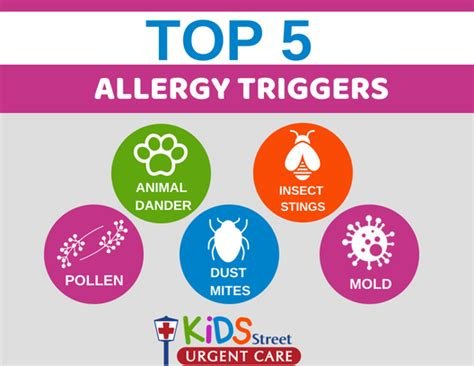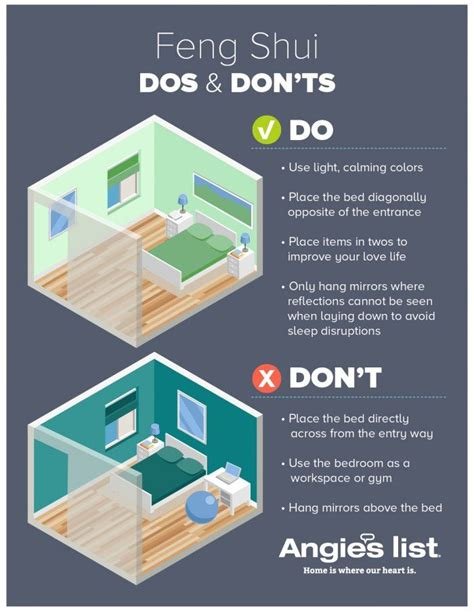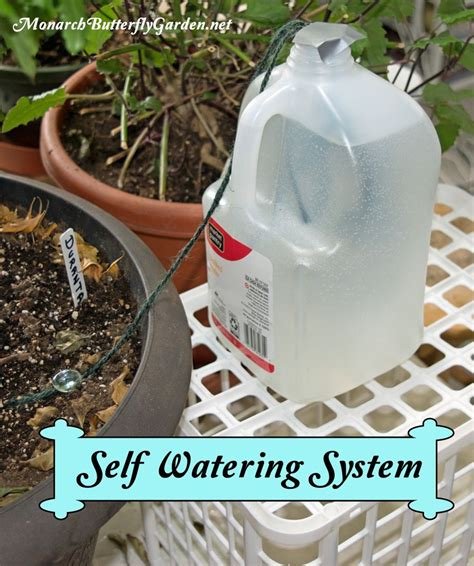Understanding Childhood Allergies: Triggers and Treatment Options
Childhood allergies can be a source of concern for parents and caregivers, as they can significantly impact a child’s well-being and quality of life. Understanding the triggers and treatment options for childhood allergies is crucial in managing and addressing these conditions effectively. In this blog post, we will delve into the various aspects of childhood allergies, including their common triggers, early symptoms, diagnostic tests, preventive measures, medication options, alternative therapies, and their impact on a child’s quality of life. We will also explore long-term management and coping strategies for dealing with childhood allergies. By gaining a comprehensive understanding of childhood allergies, parents and caregivers can better identify and address potential allergens, effectively manage symptoms, and ultimately improve the overall well-being of their children. Whether your child has a known allergy or you’re just looking to learn more, this blog post aims to provide valuable insights and information on this important topic.
What are childhood allergies?
Childhood allergies are immune system reactions to substances that are usually harmless to most people. These allergies can be triggered by a wide range of substances, including food, pollen, animal dander, and dust mites. The immune system mistakenly identifies these substances as harmful and produces antibodies to fight them off.
As a result, when the child comes into contact with the allergen again, the immune system releases histamines and other chemicals that cause the allergic symptoms. The severity of these reactions can vary, from mild discomfort to life-threatening anaphylaxis.
It is important for parents and caregivers to be aware of common childhood allergies and their potential triggers in order to effectively manage and prevent allergic reactions in children.
By understanding the causes and symptoms of childhood allergies, individuals can take the necessary precautions to minimize exposure to allergens and seek appropriate medical treatment when necessary.
Common triggers of childhood allergies
Childhood allergies can be triggered by a variety of factors, and it is important for parents and caregivers to be aware of these common triggers in order to help manage and prevent allergic reactions in children.
Foods are a common trigger for childhood allergies, with common allergens including milk, eggs, peanuts, tree nuts, soy, wheat, fish, and shellfish. It is important for parents to carefully read food labels and be aware of potential cross-contamination when preparing meals for children with food allergies.
Outdoor allergens such as pollen, mold, and grass can also trigger allergic reactions in children, particularly during the spring and summer months. It is important to minimize outdoor exposure during peak allergy seasons and to keep windows closed to prevent allergens from entering the home.
Indoor allergens like dust mites, pet dander, and mold can also trigger childhood allergies. Regular cleaning and vacuuming, using allergen-proof covers on pillows and mattresses, and keeping pets out of certain areas of the home can help reduce exposure to these triggers.
Early symptoms of childhood allergies
Childhood allergies can present themselves in a variety of ways, and it is important for parents and caregivers to be aware of the early symptoms. One of the most common early signs of childhood allergies is skin reactions, such as hives or eczema. These may appear shortly after the child has come into contact with an allergen, such as certain foods, pet dander, or pollen.
Another early symptom to look out for is respiratory issues, such as frequent sneezing, a runny nose, or nasal congestion. These symptoms can often be mistaken for a common cold, but if they persist or are triggered by specific allergens, it could indicate an underlying allergy.
In some cases, gastrointestinal symptoms may be one of the early indicators of childhood allergies. These can include stomach pain, diarrhea, or vomiting after consuming certain foods. It’s important to pay attention to the timing of these symptoms in relation to food consumption to determine if they are allergy-related.
Additionally, some children may experience behavioral changes or irritability as an early sign of allergies. This can be due to the discomfort caused by the allergic reactions, and may also be accompanied by fatigue or trouble sleeping.
Identifying specific allergens in children
Identifying specific allergens in children is crucial in understanding and managing their allergies. It is important to recognize the specific triggers that can lead to allergic reactions, as this knowledge can help parents and caregivers take preventive measures to minimize exposure.
Common allergens that affect children include pet dander, dust mites, pollen, mold, certain foods, and insect stings. Identifying these allergens often requires a comprehensive evaluation of the child’s environment, behavior patterns, and medical history. Environmental assessments, skin prick tests, and blood tests may be conducted to identify the specific allergens affecting the child.
If a child exhibits symptoms of an allergic reaction such as sneezing, itching, rashes, or difficulty breathing, it is important to consult a healthcare professional for an accurate diagnosis. By identifying the specific allergens affecting the child, parents can take proactive measures to reduce exposure and minimize the risk of allergic reactions.
Once the specific allergens have been identified, it is important to communicate this information to the child’s school, caregivers, and other family members. This can help create a safe and supportive environment for the child and ensure that necessary precautions are taken to prevent exposure to allergens.
Diagnostic tests for childhood allergies
When a child experiences symptoms of allergies, it’s important to determine the specific allergens that are causing the reaction. Diagnostic tests play a crucial role in identifying these allergens and in developing an effective treatment plan.
One of the most common diagnostic tests for childhood allergies is skin prick testing. This test involves placing a small amount of the suspected allergen on the skin and then pricking the skin to allow the allergen to enter. If the child is allergic to the substance, a small red bump will appear, indicating a positive result.
Blood tests, also known as RAST or ImmunoCAP tests, are another method for diagnosing childhood allergies. These tests measure the level of specific antibodies in the blood in response to certain allergens. This can help identify the trigger for the allergic reaction.
In some cases, a healthcare provider may recommend a food challenge test, where the child ingests a small amount of the suspected food allergen under medical supervision. This is done to confirm or rule out a food allergy diagnosis.
Preventive measures for managing childhood allergies
Childhood allergies can be stressful for both the child and their parents, but there are several preventive measures that can be taken to manage these allergies and reduce their impact on daily life. One of the most important steps is to avoid triggers that can cause allergic reactions. This may include removing allergens such as dust mites, pet dander, or pollen from the home environment. Additionally, it is crucial to educate both the child and their caregivers about what to avoid and how to manage allergic reactions when they occur.
Another preventive measure is to create an allergy action plan with the help of a healthcare professional. This plan should outline the child’s specific allergies, symptoms, and the steps to take in case of an allergic reaction. It should also include a list of emergency contact numbers, as well as instructions on how to use any necessary medications or treatments.
It can also be helpful to monitor air quality and pollen counts in the local area, as this information can help to predict and prevent allergic reactions. This can be done using various apps and websites that provide real-time air quality and pollen information. By staying informed about potential triggers, it is easier to take preventive measures to manage childhood allergies.
Finally, prevention can also involve making lifestyle changes to reduce the impact of allergies. This may include using hypoallergenic bedding, implementing pet-free zones in the home, and avoiding outdoor activities during high pollen seasons. By taking these steps and being proactive about managing childhood allergies, it is possible to minimize their impact and improve the overall quality of life for the child.
Medication options for treating childhood allergies
When it comes to treating childhood allergies, medication options play a crucial role in managing the symptoms and providing relief to children. There are several types of medications that can be used to treat childhood allergies, ranging from antihistamines to corticosteroids.
Antihistamines are commonly used to relieve symptoms such as itching, sneezing, and runny nose by blocking the effect of histamine, a substance in the body that causes allergy symptoms. These medications are available in various forms, including liquids, tablets, and nasal sprays, making them suitable for children of different ages.
Corticosteroids, on the other hand, are often used to reduce inflammation in the airways and nasal passages, providing relief from symptoms such as nasal congestion and asthma. These medications may be prescribed in the form of inhalers, nasal sprays, or oral tablets, depending on the severity of the allergy symptoms.
In some cases, children with severe allergies may require the use of epinephrine auto-injectors, also known as adrenaline pens, to treat life-threatening allergic reactions such as anaphylaxis. These devices deliver a dose of epinephrine to quickly reverse the symptoms of a severe allergic reaction and should be carried by children at all times if they have a known allergy that can lead to anaphylaxis.
Alternative therapies for alleviating childhood allergies
Childhood allergies can have a significant impact on a child’s quality of life, leading to symptoms such as sneezing, itching, hives, and even more serious reactions like anaphylaxis. While standard medical treatments like antihistamines and allergy shots can be effective, some parents may be interested in exploring alternative therapies to alleviate their child’s allergy symptoms.
Acupuncture is one alternative therapy that has gained attention for its potential in managing childhood allergies. By stimulating specific points on the body, acupuncture may help reduce inflammation and improve immune function, which could potentially lessen the severity of allergy symptoms in children.
Herbal remedies are another avenue that some parents may consider. Certain herbs like butterbur, stinging nettle, and quercetin have been studied for their potential in reducing allergy symptoms. However, it’s important to consult with a healthcare professional before giving any herbal supplements to children to ensure safety and effectiveness.
Probiotics have also been explored as a potential alternative therapy for childhood allergies. These good bacteria may help modulate the immune response and reduce the risk of allergic reactions. While more research is needed in this area, some studies have shown promising results in using probiotics as a supplemental treatment for allergies.
Impact of childhood allergies on quality of life
Childhood allergies can have a significant impact on a child’s quality of life, affecting their physical, emotional, and social well-being. Allergies can result in frequent symptoms such as sneezing, coughing, wheezing, and itchy eyes, which can interfere with a child’s ability to participate in daily activities and enjoy their surroundings.
Furthermore, allergies can lead to sleep disturbances, causing fatigue and irritability, which can affect a child’s performance in school and extracurricular activities. The constant need to avoid allergens and take necessary precautions can also lead to feelings of stress, anxiety, and social isolation for children with allergies.
Moreover, severe allergic reactions, such as anaphylaxis, can be life-threatening and require immediate medical attention, leading to heightened fear and anxiety for both the child and their family. This fear can limit a child’s freedom and independence, impacting their overall sense of well-being and security.
In conclusion, the impact of childhood allergies on quality of life is multifaceted, affecting a child’s physical health, emotional well-being, and social interactions. It is essential for parents, caregivers, and healthcare providers to work together to manage allergies effectively and support the overall well-being of children with allergies.
Long-term management and coping strategies
Managing childhood allergies can be a lifelong journey for both children and their parents. It’s important to develop long-term management and coping strategies to ensure the best quality of life for the child.
One key strategy is to work closely with an allergist to develop a personalized treatment plan. This may include regular check-ups, allergy testing, and a comprehensive action plan for managing allergic reactions. By proactively managing the child’s allergies, parents can help prevent potential flare-ups and minimize their impact on everyday life.
In addition to medical management, it’s important to create a supportive environment for the child. This may involve educating other caregivers, teachers, and friends about the child’s allergies. By fostering understanding and awareness, the child can feel more secure in their surroundings, reducing anxiety and stress related to their condition.
Lastly, coping strategies such as stress management techniques and counseling can be helpful for both the child and their family. Living with childhood allergies can be challenging, and it’s crucial to have a strong support system in place. By acknowledging the emotional impact of allergies and seeking appropriate support, families can better navigate the long-term management of childhood allergies.
Frequently Asked Questions
What are childhood allergies?
Childhood allergies are immune system reactions to substances that are typically harmless to most people. These substances, known as allergens, can trigger symptoms such as sneezing, itching, or hives in allergic children.
What are the common triggers of childhood allergies?
Common triggers of childhood allergies include pollen, pet dander, dust mites, mold, certain foods (such as peanuts, milk, eggs), insect stings, and certain medications.
What are the early symptoms of childhood allergies?
Early symptoms of childhood allergies may include sneezing, runny or stuffy nose, itchy eyes, skin rashes, and in severe cases, difficulty breathing or anaphylaxis.
How can specific allergens in children be identified?
Specific allergens in children can be identified through allergy testing, which may include skin prick tests, blood tests, and elimination diet trials.
What are the diagnostic tests for childhood allergies?
Diagnostic tests for childhood allergies may include skin prick tests, blood tests to measure allergen-specific antibodies, and oral food challenges.
What are the preventive measures for managing childhood allergies?
Preventive measures for managing childhood allergies include reducing exposure to known allergens, keeping the home environment clean, and discussing an allergy action plan with the child’s school or caregiver.
What are the medication options for treating childhood allergies?
Medication options for treating childhood allergies may include antihistamines, nasal corticosteroids, decongestants, allergy shots (immunotherapy), and in severe cases, epinephrine auto-injectors for emergency use.
What are the alternative therapies for alleviating childhood allergies?
Alternative therapies for alleviating childhood allergies may include herbal supplements, acupuncture, and probiotics, although their effectiveness for allergies is not well-supported by scientific evidence.
What is the impact of childhood allergies on quality of life?
Childhood allergies can have a significant impact on a child’s quality of life, affecting sleep, school performance, social activities, and emotional well-being.
What are the long-term management and coping strategies for childhood allergies?
Long-term management and coping strategies for childhood allergies may include regular medical follow-ups, developing an emergency action plan, and educating the child about their allergies and how to manage them effectively.






